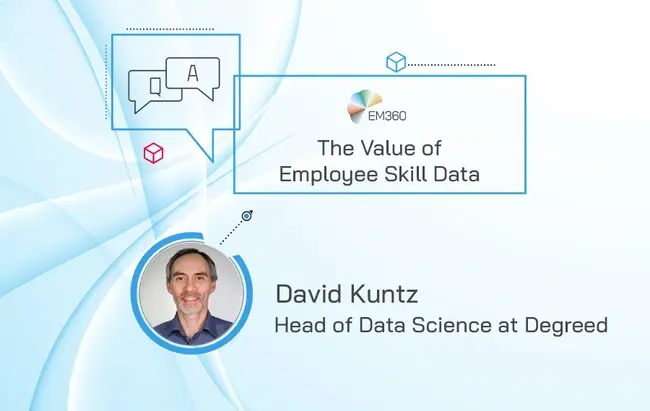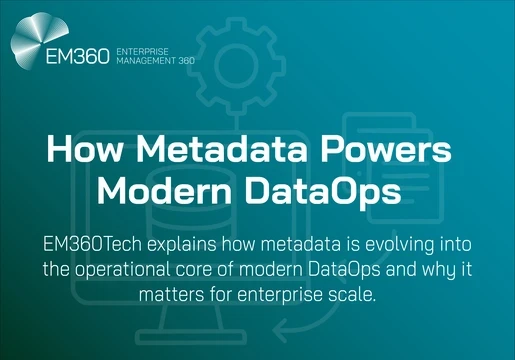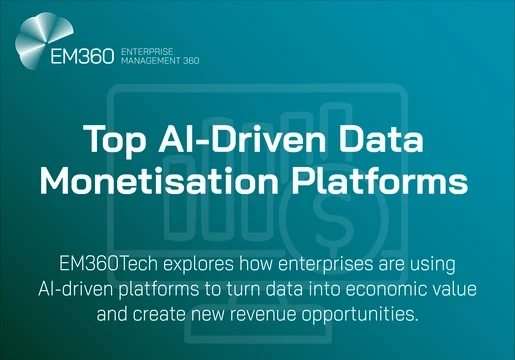Data is key to business survival and success. With business analytics at the forefront of the modern enterprise, organisations across all industries are utilising data to inform decisions, gain competitive advantages, reach goals, and ultimately avoid ineffective guesswork and consequential demise. In fact, it wasn’t long ago that Deloitte highlighted the firm relationship between insight-driven culture and business performance - ‘Organizations [with] the strongest cultural orientation to data-driven insights and decision-making are twice as likely to have reported exceeding business goals.’ - and employee skill data is one of the latest performance-enhancing datasets to hit the market. According to the education technology company Degreed, it possesses real value for employers, HR teams, and their workforce.
In this week’s QnA, we speak to David Kuntz, Head of Data Science at Degreed, to find out what skill data is, why it’s important, and how it’s transforming businesses today. David is a recognised expert in the field of data science, talent development, and educational measurement and technology. He has worked with the likes of ACT and Knewton, creating strategies for adaptive learning initiatives for personalising education. In his current role at Degreed, David leads the company’s next-generation inference engine, enabling custom skill-development recommendations, plus targeted skill-role-opportunity matching.

Welcome to EM360 David! Can you start by telling us how you got into workplace talent-skill development and what inspired you to pursue it as a career in the tech space?
Thanks so much! My own career began as an accident, really. I happened to see a one-time job posting for a role in an industry I didn’t really know even existed. It turned out that my skills and interests were a great fit for the kinds of opportunities available. I discovered a whole world at the intersection of data, software, psychology, cognitive science, and ultimately machine learning and AI. It’s a world that I would never have even considered had I not stumbled across that posting, and had I not been offered the opportunity to pursue it.
And this is why I became interested in workplace talent-skill development. We’re all bound by our own experiences. When I realized how pervasive this phenomenon is -- career paths and plans governed and bounded by our own very limited views of the world, and accidental encounters of one sort or another, I wanted to develop ways to help people move beyond their own experience, to discover and uncover the opportunities that could be available to them, if only they knew.
How do you define skill data and why do you think it’s such an important asset for all businesses and their employees today?
“Skill data” is one of those terms that is used to mean many different things! I generally use it in its most inclusive sense, comprising data related to the specific skills that people have, their level of proficiency in those skills, evidence or indicators of skills from experiences they have had, credentials they have earned, assessments they have taken, courses they have completed, etc.
On its own, while the data is interesting, it’s just data. The real power and value is in what it can tell you, and what you can do with this new information. For individuals, it means having a way to describe, capture, and represent our skills to others, and with that, a way to enable personalized learning, enabling the growth of existing and new skills in a virtuous cycle. It also means being able to step outside our own experience to discover opportunities that we never knew existed, that might be a perfect match for where we are today, or the person we want to grow into in the future.
And for organizations, it means being able to see and understand the shape of the distribution of skills within the organization, understanding where and with whom the core skills reside today, where the gaps are, relative to the goals of the organization, then leveraging this new knowledge to plan for the future, developing new learning pathways to upskill and fill the gaps, new pathways to transition from less-needed skills to strategically-important skills, and new insights into the supply and demand of skills both within and outside of the company.
Earlier this year, you hosted a webinar titled ‘How Do You Know What Skills You Need’, in which you pointed out that ‘It’s easy to say “upskill your teams!”, but it’s not always so easy to figure out how to do that.’ What is the best way for organisations to acquire, utilise, but also measure employee skill data for the purpose of upskilling? Is there a specific, proven-effective method that all enterprises should be following?
While there is no one-size-fits-all approach to skill data collection, there are definitely some best practices in how to get started! This can be a daunting task, especially for very large organizations, so the very first thing to do is acknowledge that! If you work in an organization the size of a small city, you will have neither time nor budget to tackle everyone all at once. So start with the parts of the org where the need for information is most urgent, acute, or strategic: Is there a division that’s struggling? A unit that is performing way ahead of expectations? A new initiative or program that would be accelerated by having a map of the skills available to support it?
That’s Step 1: identify which people to start with.
Step 2 is: Identify which skills to start with.
What’s the specific business strategy for the particular project, team, division or initiative you’ve selected? What are the critical actions that need to be taken for the success of that strategy? Those critical actions will help identify the key skills you’ll want to collect data on first. If there are more than ten skills, keep narrowing it down until you have a handful of truly critical skills identified. Evaluating skills takes time for each person for each skill, so keeping the set of skills small is important.
If you find it difficult to narrow down the selection of skills (and it often is), consider these key questions:
What are the new skills your business cares about?
What are the existing skill gaps you believe your business has?
What are the high-performance skills in your organization?
Finally, Step 3 is about communication. You need to let the relevant parts of the organization know what the plan is, and why. Here’s one of the big lessons learned: In a learning and development context, it is really important to help people understand that this is NOT a performance evaluation-related activity. In a learning context, people have no incentive to lie, and every incentive to honestly and reasonably evaluate their proficiency, because, ultimately, it helps identify the right learning resources to enable them to upskill the areas they care about. But even a hint of a performance-related goal for the exercise will tend to drive people to over-represent their skills, for fear that they will otherwise find themselves out of a job.
Where does data science sit within skill data and, in your experience, how is the integration of this technology sector into talent-skill development helping to reduce bias in career opportunities?
This is one of those areas where AI and ML can inadvertently introduce bias, unless one is very careful. At the same time, when handled correctly, skill data can definitely help reduce certain kinds of bias. In large organizations, a person’s career trajectory, and the opportunities for advancement available to them, are often gated by a single person -- their boss. And that person, even with the best of intentions, can be blind to, or simply ignorant of, relevant skills or experiences you might have. Or they might not be effective at communicating your strengths to others. Or they might simply not be themselves well-connected in the organization. Skill data, properly collected, can provide a more objective representation of skills across the organization, that can then be appropriately augmented by a manager’s perspective, along with peer evaluations, to help produce a more robust picture of the distribution of skills within and across your organization.
According to Gartner HR Research, 58% of the world’s workforce will need new skill sets to do their jobs successfully due to hiring freezes spurred on by COVID-19. Do you think skill data-powered education technology, such as Degreed, is the key to seamless upskilling and, more importantly, skills gap reduction, especially in IT?
A platform like Degreed, one that really understands skills, is certainly an important part of the answer. At the end of the day, the platform needs to know what skills a person has, the person’s proficiency levels with respect to those skills, what content might help that person grow those skills, what experiences could foster or be successfully accomplished with those skills, and what opportunities or experiences could help that person achieve their career or personal goals, given their current skills.
In order to do that, the platform first needs to understand the ontology of skills: what skills are, and how they are related to other skills, to content, to roles, to opportunities and experiences, and, of course, to people. This is what Degreed does. It has developed a collection of NLP-based machine learning models to understand what skills are and how they relate to each other. With that as the basis, we then connect these important elements together: mapping content to skills, extracting skills from role and opportunity descriptions, and connecting people with opportunities or experiences that are connected to the skills they have, and the skills they want to grow.
When you couple that understanding with the ability to integrate with pretty much any source of learning materials, with a wide variety of 3rd-party skill assessment providers, and with ATS systems to surface internal career mobility and experiential learning opportunities, a platform like Degreed can definitely help close those skills gaps.
For all those budding data scientists out there, what would you say are the top 3 skills they need to be well-versed in and why?
I’m not going to talk about the usual skills here. Of course you need the mathematics background to do the job, and know how to use the ordinary tools, (python, R, notebooks, various libraries, etc) Let’s assume all the table-stakes skills are there. What are the things that will really distinguish you from others?
First, you need common sense. By this I mean it is really important to be able to evaluate the boundaries of the problem space, and understand whether the solution you’re considering makes sense. For example, there was a data scientist I was speaking with once who was proudly telling me about a model they’d developed to predict whether a customer would return to local-to-them grocery stores over some period of time. The data scientist was excited because the model, they said, was 80% accurate. I asked: “Well, what proportion of customers generally return to the stores over that time period? Because if 90% of the customers usually return, your model is doing a pretty poor job!” The data scientist didn’t know, and as a consequence had no idea whether “80% accurate” was good, or terrible.
Second, you need to be able to estimate. Every single problem you’ll be asked to solve will be made more tractable if you are able to quickly, and at an appropriate level of approximation, estimate the size of the problem space. Is this a linear problem, or exponential? Is this solution likely to work when you have 10x the data / users / customers? How about 100x? What if you have 1/100th of the data? If you need labeled data, how much? How long will it take to capture that data, and how much might it cost? Quick, reasonable order-of-magnitude or factor-of-two estimation is critical.
Finally, being able to think about scale sensibly, and to apply that to the code you write, will give you a huge boost. Any company you work for will care about whether your solution can grow to meet the growth of the company. Learn how to think about issues of scale related to all the MLOps bits -- code testing, maintenance, and deployment -- as well the algorithms and models themselves -- runtime, efficiency, parallelization, etc.
Liked this article? Subscribe to the YouTube Channel for more educational content in enterprise technology.







Comments ( 0 )